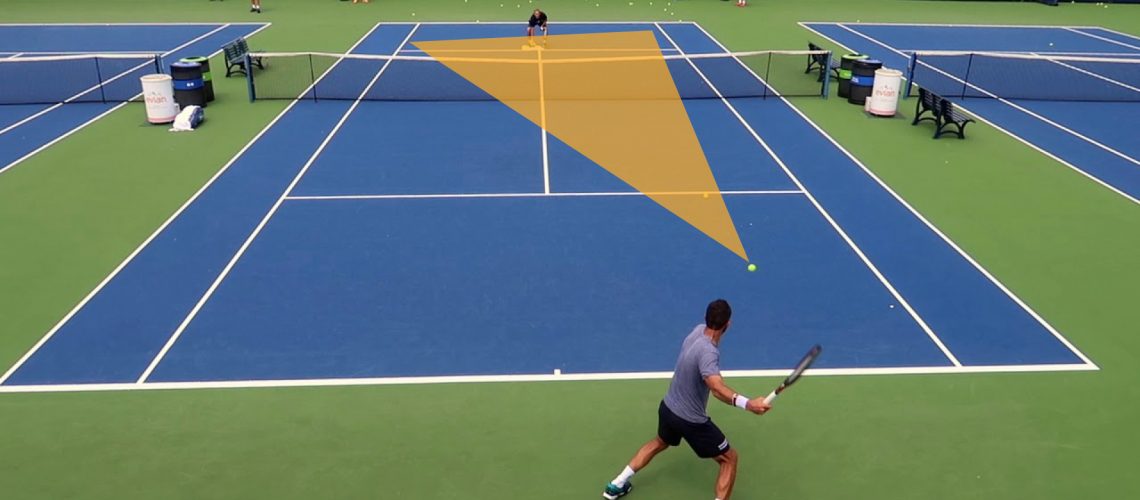In order not to try to figure out the mechanism of the wheel every time you want to choose a shot, there are certain basic rules that you must learn. Those rules are called Game Patterns. With the development of your own style, you will use some patterns more than others and you will even be able to develop some personal characteristic in this sense, but first you must establish the basic fundamentals and know those Game Patterns that are axioms of tactical selections on the court.
In this article, we are going to review the basic material, not including the serve and the return. We will start with the geometry of the tennis court and with the essential concepts of the measures of the same. Likewise, we will see several typical situations from different zones of the court and the patterns associated with them.
We will leave the most advanced material for the next articles. Knowing that, on any chosen pattern, our opponent will give us an answer, we will talk in the future about the timing of our game patterns, since the saying “the right thing at the wrong time is the wrong thing” is very true both on the tennis court and elsewhere.
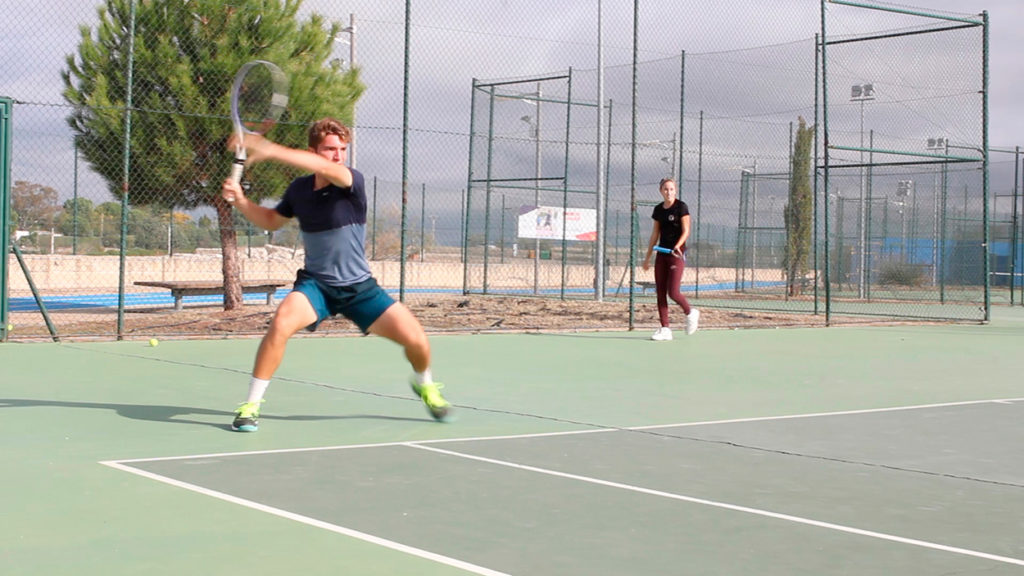
Game Pattern Geometry
Let’s first look at those concepts on which the Game Patterns are mainly based. These are: court measurements, ball placement areas, net heights, etc. Based on these measurements, we will later choose the best shots from different areas of the court.
The parameters of the crosscourt shots
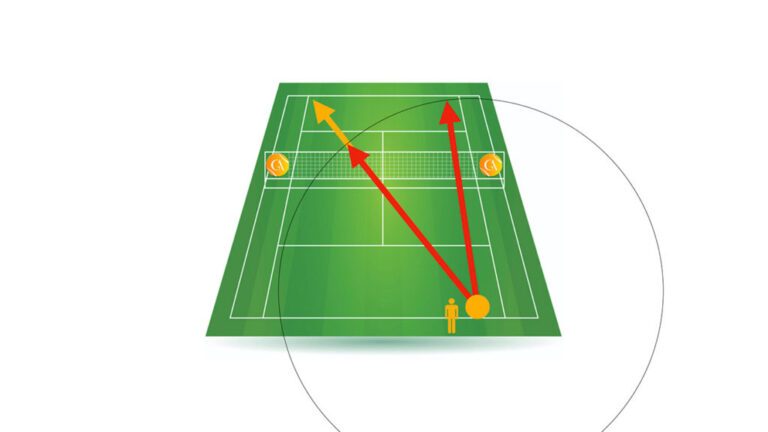
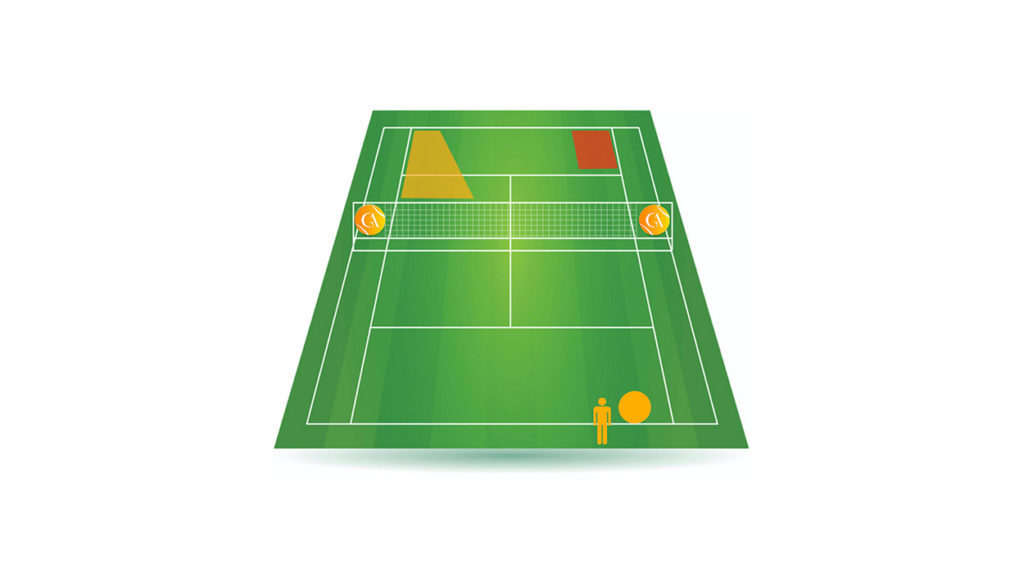
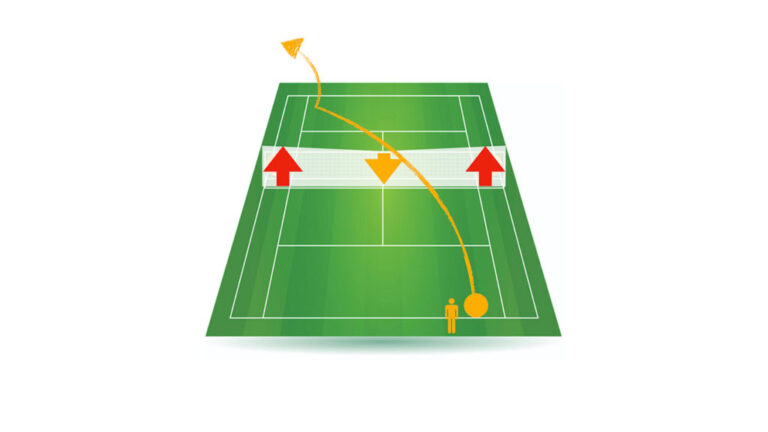
- Greater distance: the distance that the ball travels is longer – The trajectory of our crosscourt shot is longer than that of the down the line, since the distance that the ball travels is greater. That offers us greater security and less risk to execute the shot.
- Greater area: we have more area to place the ball – Also, the area to place the ball is greater in the crosscourt direction than in the down the line. Therefore, we continue to add more confidence by choosing the first option.
- Low net: the net in the path of the ball is lower – As we already know, the net in the center is lower than on the sides. Therefore, our shots will more easily pass over the net in its most central part.
- Angle: the ball opens as it advances – Our crosscourt shot will open more and more as it advances. That will create an uncomfortable situation for our opponent, since we will take him off the court and open a gap; there we can attack in the next move.
The parameters of the hitting to the center
The shot angle from the center is smaller than from the sides of the court, since we limit the opponent’s crossed blows and also the trajectory of the blow no longer passes over the center of the net, where it is lower. Thus we reduce the ability of our opponent to move out of our center leaving him space to attack.
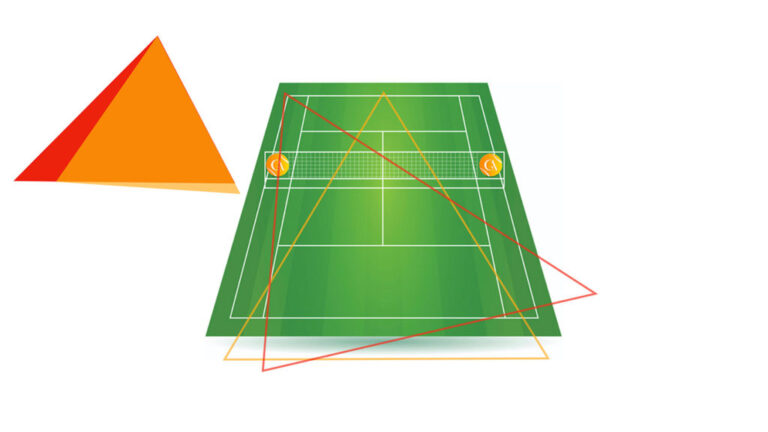
The parameters of down the line shots
The parameter that we have to take into account when we choose a down the line shot is time. As we have said before, the ball travels less distance, which implies that it does it in less time. For this same reason, once we open the gap on the court, we must take advantage of time (get the ball earlier, live ball) and put pressure or attack with down the line shots.
What we must not forget is where we hit a down the shot from. The further out of the court we are positioned, the trajectory of the ball will be directed to a greater extent towards the opposite side, re-entering towards the center. For this reason, although we save time, we must not neglect other factors such as the direction of our shot.
Having seen these basic parameters, we are going to begin to describe the Game Patterns that we must take into account on the tennis court. It is important to remember that these patterns work at all levels; although, in higher-level players, there may be variations due to a higher development of some weapons (I will comment on an example of a personal weapon development in future articles).
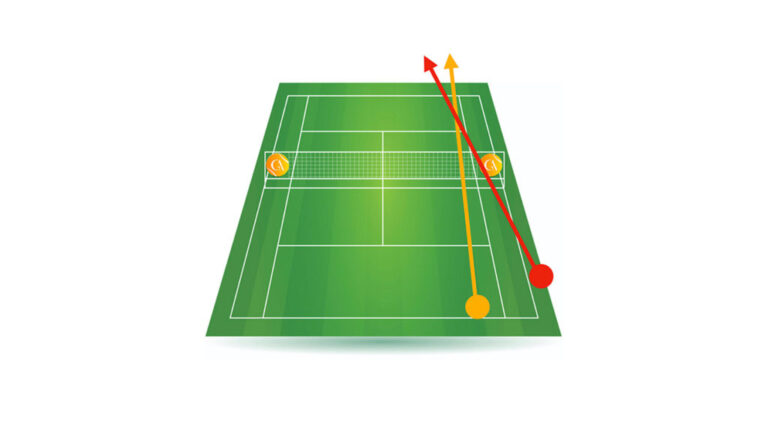
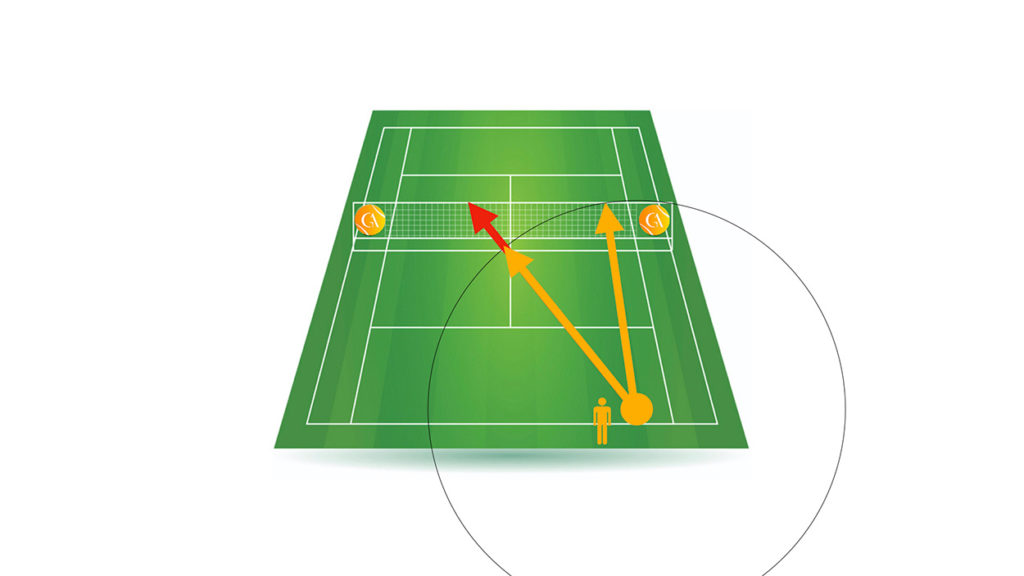
Basic Game Patterns
- Deep ball? Play deep crosscourt or deep on the weak side – You have more room when you play crosscourt to place the ball and can choose a longer trajectory than on a down the line shot. It’s a secure choice. In addition, you will be hitting the ball behind the baseline and you cannot buy time to do damage to the opponent; when this one, if he has played you cross, will recover his center quickly.
- Deep ball in the center? Play deep back to the center or on the weak side with margin – From this position, you have no angle to open the court and if you do, you will be taking a lot of risk without doing enough damage. By returning the ball deep to the center, you give the opponent the option to rush. You can also play the weak side but remember: you must do it with margin, without adjusting the ball to the lines.
- Open ball? Respond with an open, or deep in the feet crosscourt – The opponent has taken you out of the court. From this position, you have a good angle to open it. It is a sure shot and you can also get him out of position. You can also play deep in his feet to take away options to continue attacking you. All this will depend on how open he played the previous shot. Choosing a down the line would be very risky since you have a little angle and also the ball would re-enter the court. Another option would be deep in the feet to gain time to recover.
- Defense shots? Choose deep crosscourt – You are on defense, the opponent pressures you. Play crosscourt. They are secure shots, they fly for longer and let you regain your center. Play with margin and you will have even more time; play deep and you’ll take away the from your opponent options to keep punishing you on the next shot.
- Drop shot? Counter-drop – If you get a good drop shot, the best option is to respond back with a drop shot too. This way you prevent the opponent from having an advantage with his position, by getting him out of position. Take him forward and level the situation. In case the drop is not so good but you didn’t reach with margin, you will have other options such as the approach +1.
- Approach + 1? The best option for approach: down the line – Remember where your center is when you go up to volley (Your Center of the Court). With down a line approach, you will get to your center earlier and thus cover the net well. Also, you will leave less angle of the shot to the opponent. You must play deep and low to get him off the court and/or not give him the opportunity to hit at a shoulder height, from where he will have a better angle of make damage.
- First passing shot when the opponent is coming to the net? Open crosscourt to the feet – Your opponent is coming up to the net. He has not yet taken its optimal center to close the angles. At this time, you have the option of hitting an open cross or to the feet to make him uncomfortable. At no point, you throw a lob over the opponent who is approaching.
- Passing an opponent already in position? Down the line – Your opponent is already in position on the net. By this time, he has already closed the crosscourt option (if he has taken his center). If you still choose a crosscourt, the ball will fly longer and pass through the center of the court, where he will have time to intercept it. Play down the line, so the player on the net will have less time to react, and if you can, play aggressively.
- Inside out forehand? The rule of “9/1” crosscourt – 9 crosscourt inside out forehands for each down the line. Hitting the inside out forehand you have left the court open, so you must first be aggressive on the opponent’s weak side (crosscourt shot) and, if you want to switch to down the line, you must see the gap very clearly. The change to the down the line must be a winner or a forced shot so that your opponent does not take the ground and does not take advantage of the space on the court that you have left open.
With this we will finish for the moment. In the next article on the Game Patterns we will develop more the plays of 2 shots, serve +1 and return +1. In the meantime, I encourage you to start using the guidelines outlined above and to become aware of why you choose each stroke.



